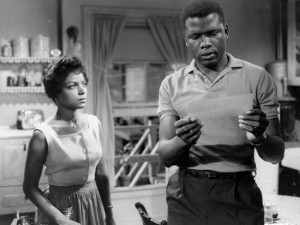The question of how Black people and our filmmakers should approach the reconstruction of Blackness, both internally and in regards to its relationship to external influences, is a central issue in Black film.
After a recent history of slavery and continuing cultural and political marginalization, Black filmmakers face the difficult task of reconstructing their people’s identity in a time when identity is becoming increasingly fluid.
Nonetheless, Black identity in America still needs to be reconstructed because it was broken. It needs to be resurrected from the shackles, for the simple reason that, we may yet gain a better understanding of its fluid margins today.
But, it will be wrong to begin a black reconstruction from the perspectives of the margins where it is most fluid. Obviously, this is the dilemma we face in America – that after wrestling the right to reconstruct ourselves from the white man, we have left it in the hands of black people who want only to be black 20 percent of the time – the Henry Louis Gates and Tourés.
Moreover, despite Spike Lee’s major offerings towards understanding Blackness in America, it has been widely limited to understanding issues relating to Black experiences post-civil rights. In addition to the Kasi Lemmons, the Julia Dashs, Neema Barnetts, to name but a few, who have chipped in their respectable plethora of Black representations in film, their contributions need corroboration with a black image before slavery.
Tyler Perry for example, has also contributed his quota – no matter how meager – towards this reconstruction but his recent childhood exuberance over a Kardashian we may have seen on a kind of tape that was just a little bit more than a hip-hop music video, is maddening. His effort is also grossly overrated by capital and underrated by the academy. Moreover, his films are also insufficient and even perhaps going to be more handicapped by his new taste in Good Deeds.
The reasons for these shortcomings are perhaps hard to completely point out but the profuse Black cultural influences on other cultures should be invariably linked to an equal manifestation in film. The influence however, is often diffused and a clear visual of Black culture and life is lost in that translation.
 Furthermore, the mixing of non-Black images with Black images, and especially the influx of capital may have strictly influenced Black cultural and humanistic productions. Even redefining the kind of Blackness, as we may know it in America – understood only in relation to slavery – is also seriously undermined.
Furthermore, the mixing of non-Black images with Black images, and especially the influx of capital may have strictly influenced Black cultural and humanistic productions. Even redefining the kind of Blackness, as we may know it in America – understood only in relation to slavery – is also seriously undermined.
How much more for Reconstructing Blackness?
To speak of a black reconstruction in film, to borrow DuBois’ language, is to allude to an existence of a hitherto realistic representation of Blackness in film. But we do not have that luxury. Hence, the more difficult the problem.
How do we speak of reconstructing Blackness in film when it was never there to be deconstructed in the first place?
It is not surprising then when the Henry Louis Gates and Mr. Tourés begin the process from the faded-fluid-margins of Black irrelevance. As Mr. Touré would put it, there are 40 million black people in America, so there are 40 million ways to be Black – the sort of stance in defining Blackness before we have even comprehended it.
Such an effort at redefining blackness puts the emphasis on difference more than is needed in consolidating our efforts for total emancipation.
Black reconstruction in film therefore is simply putting Blackness on the screen – how it was long before it was forced into chains, forced to beg and forced to dissolve into the expansive sea of mainstream film and universality.
Black reconstruction in film is putting the uniqueness of black life and culture on the screen. A herculean task! Nevertheless, because it is necessary, it is surmountable.










A new Black film Renaissance is needed. That’s all.